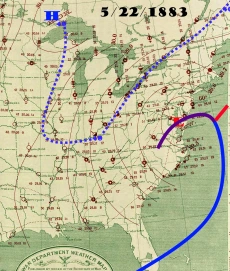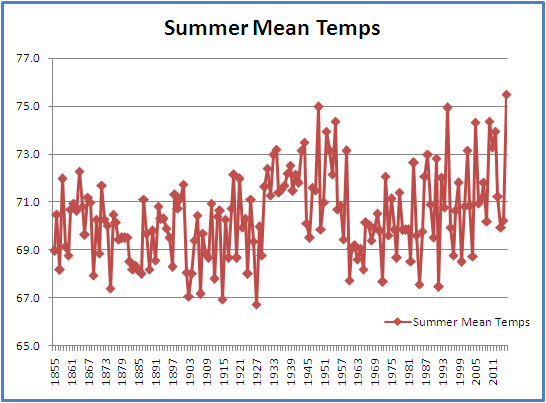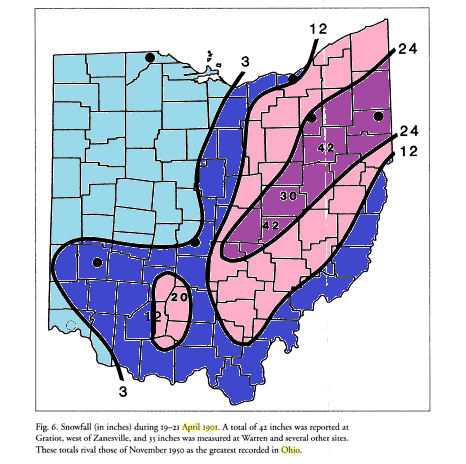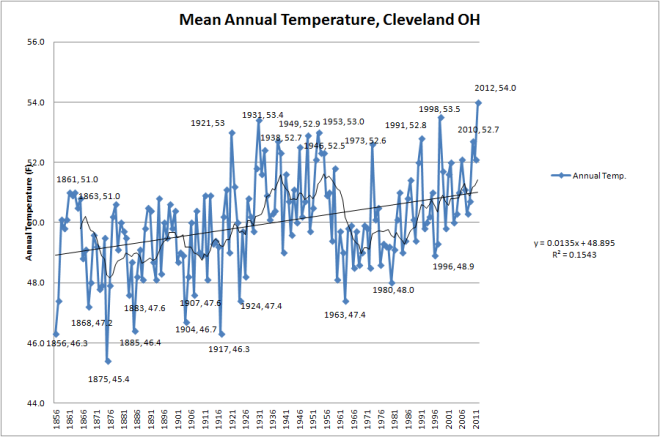A common criticism of the temperature records are that they are greatly affected by the urban heat island effect. Now, the urban heat island effect is a real phenomenom; however, the extent to which it is affecting global climate changes is negligible. The vast majority of the earth is comprised of water (oceans). And a good deal of the land mass is still rural. But even in urbanized areas, the extent to which the observed changes can be ascribed to urban heat is limited. The trend is only going to be affected if there’s been a large and noticeable change in the land use and prevailing character of the terrain. A station sited in an urban area may show warmer temperatures than surrounding suburban or rural locations, but the overall trend should not be greatly affected unless there’s been a real change in the urban character of the surroundings.
Below is a comparison of the Lake Erie water temperatures measured off the coast of Buffalo, NY (approximately 30-35′ below the water’s surface) with the air temperatures measured at Buffalo. The data shown below are for the period January 1 through September 23, in order to allow 2016 to be accurately depicted. I will issue an update at the end of the year. There’s a remarkable correlation between the two. In fact, of the ten warmest water temperature years, all but one (1953) also appear among the ten warmest air temperature years. Likewise, of the ten warmest air temperature years, all but one (1955) appear among the ten warmest water temperature years. 2012 is #1 for both categories. The overall trend in air temperature is +0.188F per decade for the period 1927 to the present, and the overall trend in water temperature is +0.165F per decade over the same interval. The slightly greater trend in air temperature should not be surprising considering the higher heat capacity of water versus air (in fact, it is to be expected). Thus, using the observed change in water temperature, one can pretty much confirm that the trend in air temperature is a real phenomenom (and not an artifact of the data).
To date, 2016 has had the 2nd warmest observed water temperature (mean: 54.0F) and the 3rd warmest air temperature (mean: 53.6F).
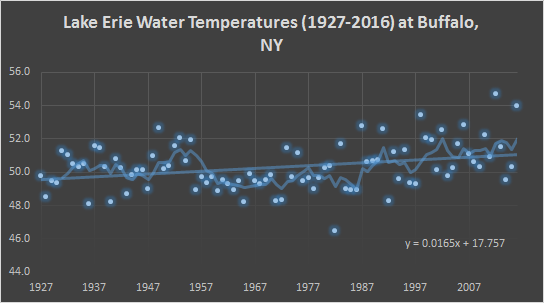
Figure 1. Lake Erie water temperatures at Buffalo, NY for the period January 1 through September 24 (1927-2016).
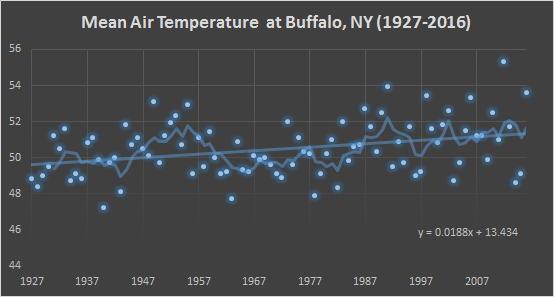
Figure 2. Mean air temperatures at Buffalo, NY for the period January 1 through September 24 (1927-2016).
Ten Warmest Lake Temps, Buffalo (1/1 – 9/24)
- 2012 54.7F
- 2016 54.0
- 1998 53.5
- 2006 52.8
- 1987 52.8
- 1949 52.7
- 1991 52.6
- 2002 52.5
- 2010 52.2
- 1953 52.1
Ten Warmest Air Temps, Buffalo (1/1-9/23)
- 2012 55.3F
- 1991 53.9
- 2016 53.6
- 1998 53.4
- 2006 53.3
- 1949 53.1
- 1955 52.9
- 1987 52.7
- 2002 52.6
- 2010 52.5
